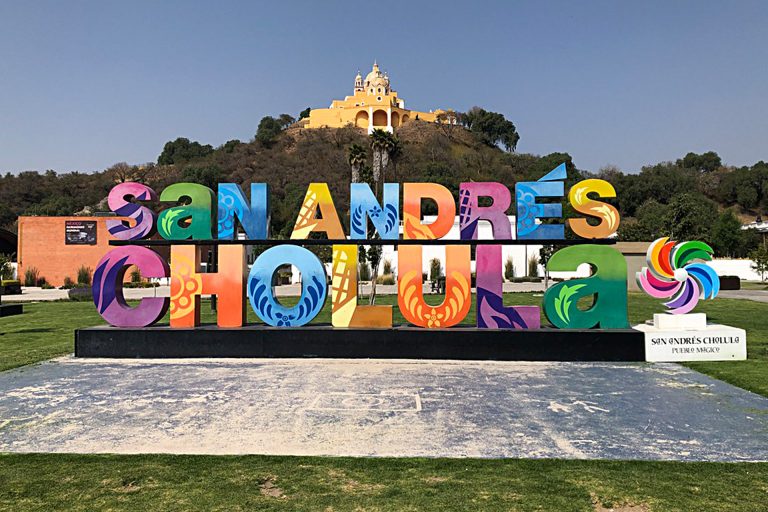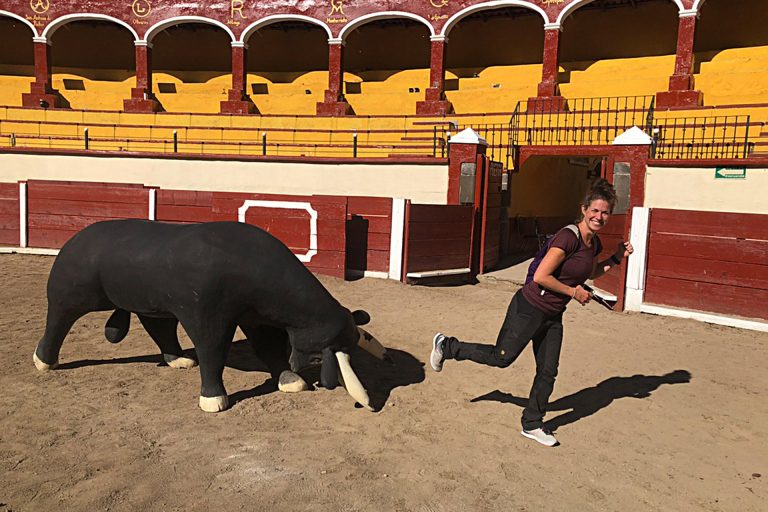Tour of Cholula & Tlaxcala
Cholula
The Grand Pyramid of Cholula is the largest in the world, and it is made of seven layers built throughout a millennium by different cultures, the Toltecs being its latest inhabitants.
The pyramid stands at 55 meters over the surrounding plane, and in its final version was 450 by 450 meters wide.
It was used as a temple dedicated to the god Quetzalcoatl. Its style is a mixture between Teotihuacán and the Gulf cultures, very specifically El Tajín.
Our visit will take us through very narrow and low passages, that will lead us into the Patium of the Altars and the Ceremonial Master Altar.
This sanctuary is a catholic temple, standing at the top of the Grand Pyramid,in San Andres Cholula. Its construction began in 1594, although the building was partially destroyed by an earthquake in 1864, and had to be rebuilt.
From the upper platform we have a fabulous 360 degree view that shows us the city of Puebla and three different volcanoes higher than 5,000 meters!
This is our favorite church in the whole of Mexico! It is a perfect example of the Mexican culture: a mixture of European architecture, decorated with the fantasy and the bright colors of the indigenous people.
The temple was built in the XVIII century, and it is considered the jewel of Mexican baroque. Its façade combines mosaics of talavera poblana with red bricks, which lend it a fascinating appeal. It was one of the first temples erected in the region.









Tlaxcala
This building is a beautiful example of the Plateresque style. It was originally built in 1541, and had to be rebuilt after the earthquake of 1711.
Inside you will find some wonderful murals painted by the talented Tlaxcalan artist Desiderio Hernández Xochitiotzin (1922-2007). Desiderio Hernández Xochitiotzin (1922-2007)The bright colors of the prehispanic peoples are fascinating. The murals depict first the history of the foundation of Tlaxcala, and later show chronologically the history of Mexico, from the Conquest to the Independence. Because the author was bilingual Spanish-Náhuatl, many explanations are found in both languages.
The Cathedral of Tlaxcala was one of the first religious buildings in America (1530-1536). Its coffered roof in Mudéjar style is one the best in Mexico. Here were the first plays in náhuatl performed, although with religious objectives. You will also see the original baptismal font in which Hernán Cortés had the four great Tlaxcalan warlords christened in 1519.
Have you ever stepped on the arena of a bullfight ring? You will have the opportunity to do it here, and imagine the emotions that a bullfighter feels facing a 600-kilogram fighting bull. The State of Tlaxcala is renowned for its bullfighting tradition, and its Plaza de Toros is one of the prettiest in the whole country. Very often, you will see young would-be bullfighters training, with tools that are replicas of the bull’s head.
